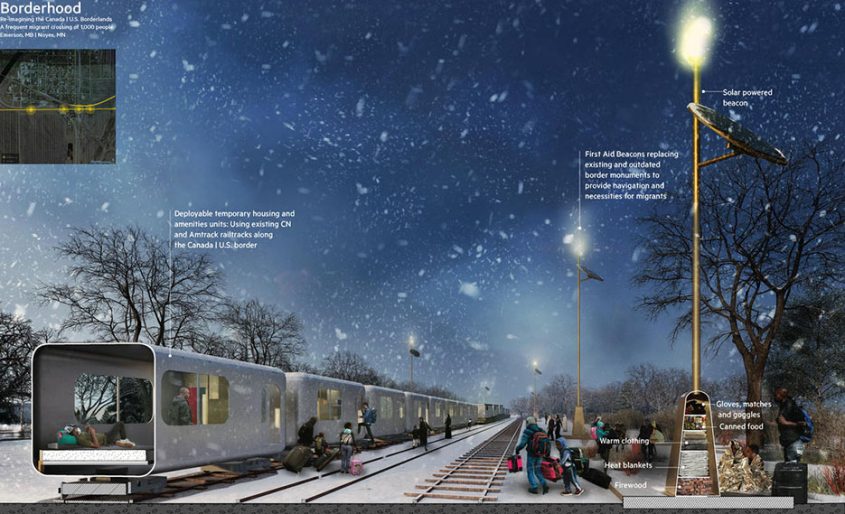The University of Calgary’s School of Architecture, Planning and Landscape (SAPL) has announced the three prize winners, honorable mentions and finalists of its international design ideas competition, CBDX: BORDERLANDS.
With entries from 69 different cities across 22 different countries, the competition sparked global interest in a conversation about the role designers can play in borders – whether geopolitical, environmental or urban – and the spaces around them.
“As a design school we are constantly thinking about how to equip this next generation of architects, landscape architects and urban planners to design in a way that disrupts the status quo to bring about positive change,” explains SAPL dean John Brown. “International design competitions are a great way for us to broaden the conversation about challenging topics.”
Participants submitted design proposals that displayed a concern for healing the natural world and diminishing class differences by promoting equity. The entries focused on complex and unexpected spaces like the nuclear borderlands of Fukushima, gerrymandering within U.S. district borders, protected natural spaces encroached upon by mining or logging, repurposing the ruins in Wadi Salib for communal benefit, lessening the divide between slum and town in Mumbai, and neutralizing the destruction wreaked by volumes of moving sand in the Great Lut Desert in Iran.
“The selected entries demonstrate a bold range of sites and approaches to the question of borderlands. It is interdisciplinary designs like these – those that center the dispossessed and voiceless – that will illuminate a more grounded and compassionate take on the discipline,” said University of Calgary professor and jury chair Alberto de Salvatierra. “Architecture and design are, and have always been, political. We therefore have a responsibility to not shy away from these complex issues.”
The three SAPL prize-winning entries addressed difficult topics. Sonny Meng Qi Xu created ‘Borderhood’, a design intervention for the US-Canada border that includes retiring the 8,000-plus border monuments and replacing them with First-Aid Beacons designed to accommodate migrants and asylum seekers. The Beacons would provide navigation and necessities such as gloves, food, jackets, and blankets. Xu’s proposal also takes advantage of existing railway tracks adjacent to the border to create movable units for temporary housing, medical care, daycare, and other amenities.
Joel Schülin and Charlotte Flügger from Bauhaus University Weimar deployed their design talents to address the refugee crisis in the Mediterranean Sea with their ‘Mind the Gap’. Their specially designed rescue buoys offer safety and act as memorial for the catastrophe. Located in large numbers on the main sea routes, one buoy can hold eight people and is equipped with an SOS-System and care packages.
Mahla Ebrahimpour and Agnieszka Lula designed an ‘Ecotone’ for Poland’s Murckowskil Forest, a formerly pristine ecosystem that has been significantly altered by mining. With mining operations coming to a close, the team proposed setting new boundaries and interacting with the environment in a respectful way, using woven wattle walls that readjust the border between wetland and woodland and an elevated walking platform to give humans a place to enter without harming the habitat.
The 25 selected entries are on display in a virtual exhibition for the month of September.






